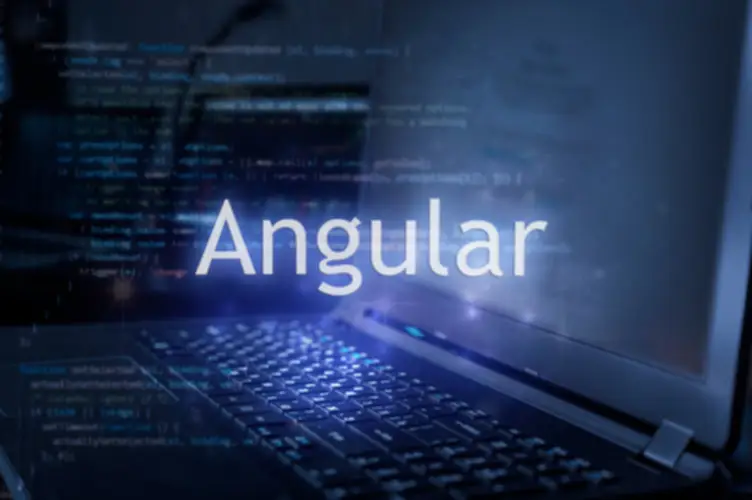Quite than continuous alerts, we’ll now feed strings of particular person tokens to the mannequin one after the other. Notably, in the case of bigger language fashions that predominantly make use of sub-word tokenization, bits per token (BPT) emerges as a seemingly extra appropriate measure. Nevertheless, because of the variance in tokenization strategies throughout completely different Large Language Fashions (LLMs), BPT doesn’t function a dependable metric for comparative analysis amongst various models. To convert BPT into BPW, one can multiply it by the average number of tokens per word. The release of ChatGPT led to an uptick in LLM usage across several research subfields of computer science, including robotics, software program engineering, and societal influence work.17 In 2024 OpenAI launched the reasoning model OpenAI o1, which generates long chains of thought before returning a last answer. After neural networks became dominant in image processing round 2012,9 they have been applied to language modelling as properly.
Research highlights a 31.4% increase in performance on logical reasoning tasks, allowing these fashions to excel in areas corresponding to authorized analysis, scientific discovery, and technical doc interpretation. The capacity to take care of global cloud team context throughout long passages also positions LLMs as indispensable instruments for research and education. Moreover, enhancements in long-context processing allow these models to handle extensive conversations, making them more practical for functions in fields such as regulation, customer support, and medical documentation.
This development holds immense potential for breaking language limitations and democratizing access to info in underrepresented linguistic communities. Continued analysis into low-resource language modeling goals to bridge the gap for areas the place digital content material is scarce. The query generation model can automatically harvest numerous question-passage-answer examples from a text corpus.We show that the augmented information generated by question technology improves the query answering mannequin. Moreover, Effectively Modeling Lengthy Sequences with State Structured Areas introduces techniques for implementing bidirectional state-space models. These fashions can course of sequences in both the forward and backward directions, capturing dependencies from previous and future contexts. Though recurrent representations are inefficient to train, they will handle varying sequence lengths.
- Effectively distributing the computational workload is essential for sequence algorithms, especially when coaching on massive datasets.
- Word embeddings, similar to Word2Vec and GloVe, enhanced semantic understanding but lacked dynamic context.
- These outcomes align with latest 2024 analysis, corresponding to Li et al.’s work on enhancing multi-hop data graph reasoning8 and Liu et al.’s growth of CA-BERT for context-aware chat interactions3.
We evaluate our methodology with the generative question answering models Seq2Seq and PGNet as described in 35.The Seq2Seq baseline is a sequence-to-sequence mannequin with an attention mechanism. The PGNet mannequin augments Seq2Seq with a duplicate mechanism.As proven in Table 7, our generative question answering mannequin outperforms previous generative strategies by a wide margin, which considerably closes the hole between generative methodology and extractive methodology. We have conducted experiments on each NLU (i.e., the GLUE benchmark, and extractive query answering) and NLG duties (i.e., abstractive summarization, question technology, generative question answering, and dialog response generation).
What Are The Challenges Confronted In Implementing Nlu?
In the specific case of a car, this direct feedthrough (D) is zero, however we keep it within the model as, generally, techniques can (and do) have direct input‐to‐output dependencies. SSMs are a technique for modeling, studying, and controlling the conduct of dynamic systems, which have a state that varies with time. SSMs characterize dynamic systems utilizing first-order differential equations, offering a structured framework for evaluation and simplifying computations in comparability with fixing higher-order differential equations immediately. In a collection of articles, we’ll introduce the foundations of SSMs, discover their software to sequence-to-sequence language modeling, and provide hands-on guidance for training the state-of-the-art SSMs Mamba and Jamba. Entropy, in this context, is commonly quantified by method of bits per word (BPW) or bits per character (BPC), which hinges on whether or not the language model utilizes word-based or character-based tokenization.
The Pathways Language Mannequin (PaLM) is a 540-billion parameter and dense decoder-only Transformer mannequin skilled with the Pathways system. The aim of the Pathways system is to orchestrate distributed computation for accelerators. The experiments on hundreds of language understanding and generation tasks demonstrated that PaLM achieves state-of-the-art few-shot efficiency across most tasks, with breakthrough capabilities demonstrated in language understanding, language generation, reasoning, and code-related duties. ALBERT is a Lite BERT for Self-supervised Studying of Language Representations developed by Zhenzhong Lan, Mingda Chen, Sebastian Goodman, Kevin Gimpel, Piyush Sharma, and Radu Soricut. It was initially proposed after the Google Research group addressed the problem of the repeatedly rising measurement of the pretrained language fashions, which leads to reminiscence limitations, longer coaching time, and generally unexpectedly degraded efficiency. Transformers capture long-range dependencies and context through the self-attention mechanism.
As A Outcome Of it preceded the existence of transformers, it was done by seq2seq deep LSTM networks. Recent years have introduced a revolution within the capacity of computer systems to know human languages, programming languages, and even biological and chemical sequences, similar to DNA and protein constructions, that resemble language. The latest AI models are unlocking these areas to investigate the meanings of input textual content and generate significant, expressive output.
When it comes to selecting one of the best NLP language model for an AI project, it’s primarily decided by the scope of the project, dataset kind, training approaches, and a variety of other elements that we will clarify in other articles. Generative Pre-trained Transformer three is an autoregressive language model that makes use of deep studying to produce human-like text. We’ll stroll by way of constructing an NLU model step-by-step, from gathering training information to evaluating performance metrics. In the information science world, Natural Language Understanding (NLU) is an space focused on speaking meaning between people and computers. It covers a quantity of totally different duties, and powering conversational assistants is an active analysis space. These analysis efforts often produce complete NLU models, also known as NLUs.
Developments In Pure Language Processing: Exploring Transformer-based Architectures For Textual Content Understanding
Once a model attains near-perfect scores on a given benchmark, that benchmark ceases to serve as a significant indicator of progress. This phenomenon, generally known as “benchmark saturation,” necessitates the development of more difficult and nuanced tasks to proceed advancing LLM capabilities. For instance, traditional benchmarks like HellaSwag and MMLU have seen models attaining high accuracy already.

NLU has various real-world applications, such as chatbots and digital assistants for customer assist, sentiment evaluation for social media monitoring, and automating duties in numerous domains the place language understanding is essential. Real-world NLU purposes similar to chatbots, buyer help automation, sentiment analysis, and social media monitoring were also explored. This information unravels the basics of NLU—from language processing strategies like tokenization and named entity recognition to leveraging machine studying for intent classification and sentiment analysis. BERT builds upon latest work in pre-training contextual representations — including Semi-supervised Sequence Studying, Generative Pre-Training, ELMo, and ULMFit. Nonetheless, in distinction to these earlier fashions, BERT is the first deeply bidirectional, unsupervised language illustration, pre-trained utilizing only a plain text corpus (in this case, Wikipedia). A model’s context representation is essential for its ability to capture the inner dependencies inside a sequence.
Pre-trained NLU models are fashions already trained on huge quantities of data and able to general language understanding. All of this info forms a coaching dataset, which you’d fine-tune your model utilizing. Every NLU following the intent-utterance mannequin uses barely totally different terminology and format of this dataset but follows the same principles. For instance, an NLU may be skilled on billions of English phrases ranging from the climate to cooking recipes and everything in between. If you’re constructing a bank app, distinguishing between credit card and debit playing cards could additionally be extra necessary than types of pies.

The very common NLUs are designed to be fine-tuned, where the creator of the conversational assistant passes in specific tasks and phrases to the final NLU to make it better for his or her objective. Using a diagonalized model of the HiPPO-N matrix reduced the model’s computational complexity by eradicating the necessity to convert the HiPPO-LegS matrix into its DPLR approximation. In Simplified State House Layers for Sequence Modeling, Jimmy Smith, Andrew Warrington, and Scott Linderman proposed a number of enhancements to the S4 structure to reinforce efficiency while sustaining the identical computational complexity.
Innovations similar to LSSL, S4, and S5 have superior the sphere by enhancing computational effectivity, scalability, and expressiveness. To stability these competing calls for, the modified LSSL – dubbed S4 – adopts a partially learnable A. By sustaining the DPLR construction of A, the model retains computational efficiency, whereas the introduction of learnable parameters enhances its capability to seize richer, domain-specific behaviors.
